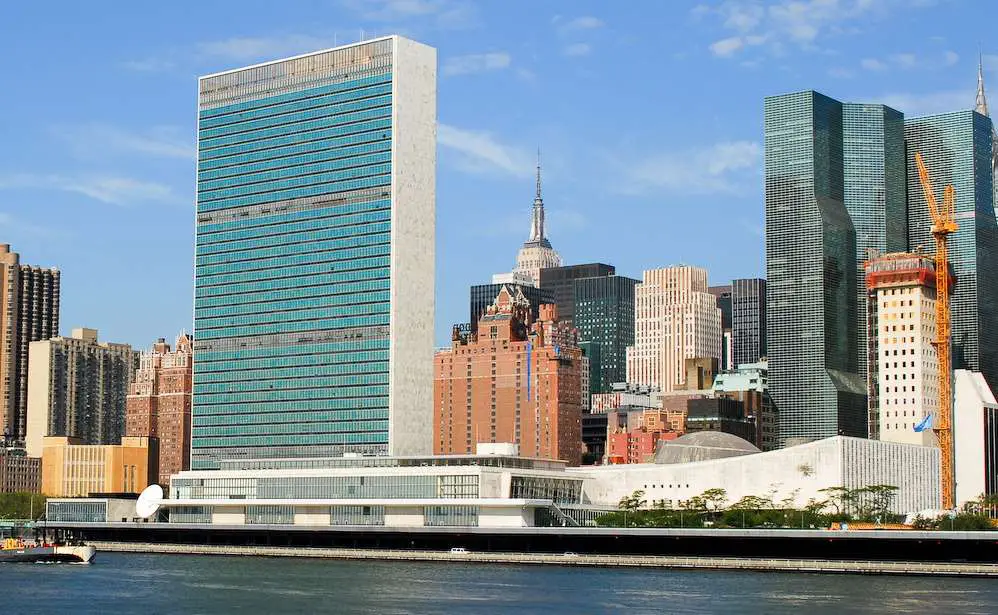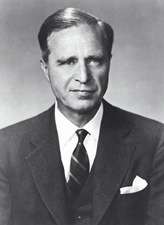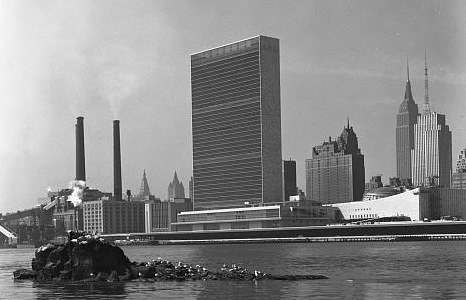Peace after World War II was shattered in Greenwich, Conn., when a United Nations site committee started looking at land for its new headquarters in the tony suburb.
The news came in December 1945 to the Greenwich Time newspaper by Prescott Bush, a resident, banker, future U.S. senator and father of George H.W. Bush. It shocked the town.
Fifty-one countries formed the United Nations in 1945 in the aftermath of World War II. They intended the organization to end future wars. But first the U.N. needed a place to meet.
The United Nations Organization site committee, headed by Dr. Stoyan Gavrilovic of Yugoslavia, had chosen a 42-square-mile site. It included nearly all of Greenwich north of the Merritt Parkway and parts of Stamford and North Castle.
It would be called the “Free City of the United Nations,” kind of like Vatican City in Rome. The committee proposed a new railroad spur and four-lane highway. Their wish list also included an airport, a sewage treatment plant, a residential section, a business section, a hotel, power plants, churches, schools, a hospital, fire and police stations. The crowning glory: a 12-story administration building modeled after the Pentagon, for 50,000 office workers.
Greenwich residents took to calling it UNOville. Most of them had one message for the U.N.: Not In My Back Yard.
Greenwich Selected
Cities and towns all across the United States scrambled to lure the United Nations. Sen. Harley Kilgore of West Virginia sent a letter to the committee arguing the town of Berkeley Springs would be much more affordable than Fairfield County. Stamford, Conn., unlike Greenwich, wanted the U.N. Also in contention were Atlantic City, Bear Mountain in New York, Palisades State Park in New Jersey, Glacier National Park in Montana, the Black Hills of South Dakota.
Golf and Nightclubs
Pedro Lopez, a diplomat from the Philippines, explained the attraction of Greenwich. Its idyllic countryside would inspire the meditation and contemplation that would help solve the problems of a suffering and miserable world. Plus, it offered golf, and New York’s nightclubs and theaters were only a short train ride away.
That would be nice for the diplomats, not so much for the residents of Greenwich. Prescott Bush explained the opposition in a letter to the UNO: A thousand families would be displaced and traffic, already a problem, would get worse.
Greenwich lawyer John L. Gray and his law partner Wilkie Bushby then organized a protest meeting at the Greenwich Country Day Schoo. Two hundred fifty people showed up and called themselves the Greenwich People’s Committee. A petition circulated, legal fees were raised, and Town Meeting supported a resolution opposing UNOville.
It wasn’t unanimous. Some residents supported the goals of world peace after the bloodshed of World War II. Others saw business opportunities and rising property values. However, they formed a distinct minority.
Opponents scheduled a referendum for George Washington’s birthday, but then rescheduled, fearing residents would be on vacation. On March 2, 1946, 73 percent of those voting opposed the U.N. They wanted world peace, just not world peace headquarters in their backyards.
Angry Millionaires
The news media couldn’t resist. “The millionaires of Connecticut are angry,” reported the Daily Mail from the UK. “Arise, Greenwichers, Ye Prisoners of the UNO,” blared a New York Post headline.
For those who didn’t know, the Daily Mail reported Greenwich had ‘mansions with 30 servants to run them’ and ‘golf clubs that cost $400 a year to belong to if you are the type that ‘belongs’.’ The town also offered private beaches, and ‘everything that a man can wish if he is a millionaire.’
Greenwich’s opposition began to sway UNO. The French sided with the protesters, unwilling to displace residents. Australia wanted San Francisco anyway. And Middle Easterners opposed New York because of its large Jewish population.
By October, the Rockefeller family had donated the land on the East Side of New York City, which made that city inevitable.
Greenwich could then breathe a long sigh of relief.
Images: UN Headquarters By https://www.flickr.com/people/flickr4jazz/ – https://www.flickr.com/photos/flickr4jazz/2724390955/, CC BY 2.0, https://commons.wikimedia.org/w/index.php?curid=88858853. This story was updated in 2023.





1 comment
[…] week we wrote about the controversy that erupted in Greenwich, Conn., when the United Nations announced plans to build a new city in northern Greenwich and parts of […]
Comments are closed.